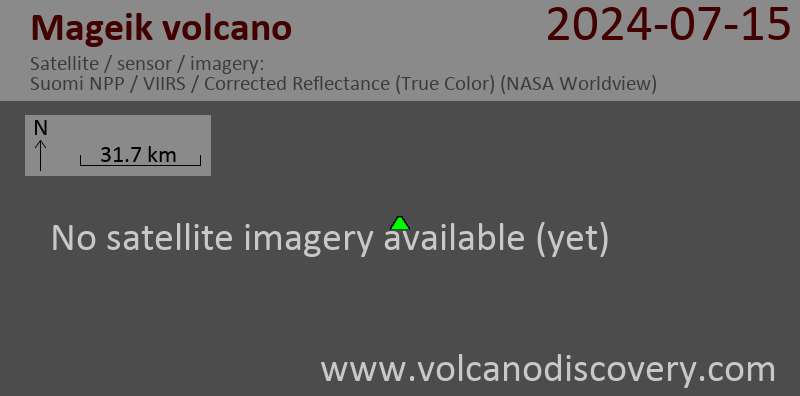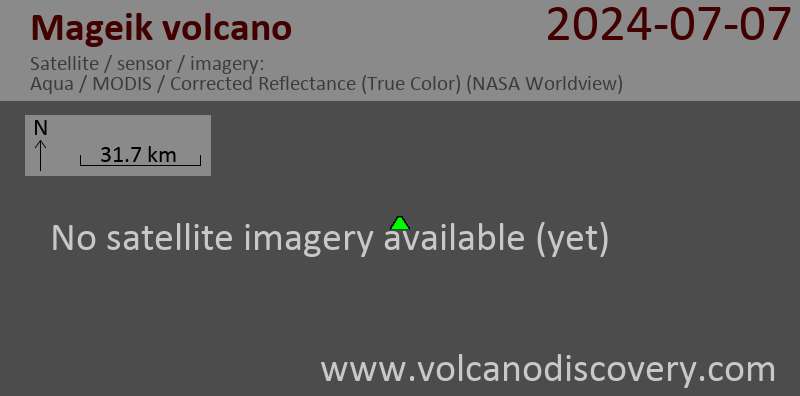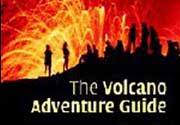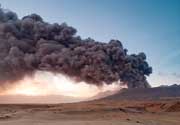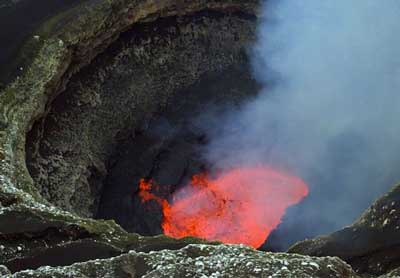Mageik Volcano
Updated: Apr 28, 2024 10:07 GMT -
Stratovolcano 2165? m / 7,103 ft
United States, Alaska Peninsula, 58.2°N / -155.25°W
Current status: normal or dormant (1 out of 5)
United States, Alaska Peninsula, 58.2°N / -155.25°W
Current status: normal or dormant (1 out of 5)
[smaller] [larger]
Mageik volcano eruptions: 500 BC ± 50 years
Latest nearby earthquakes
| Time | Mag. / Depth | Distance / Location | |||
| Apr 24, 02:31 am (Anchorage) | 0.6 37 km | Info | |||
| Apr 24, 01:38 am (Anchorage) | 0.8 35 km | Info | |||
| Tuesday, April 23, 2024 GMT (1 quake) | |||||
| Apr 23, 03:27 am (Anchorage) | 0.9 98 km | Info | |||
| Thursday, April 18, 2024 GMT (1 quake) | |||||
| Apr 18, 01:04 pm (Anchorage) | 1.1 1.1 km | 7 km (4.3 mi) to the NE | Info | ||
| Wednesday, April 17, 2024 GMT (2 quakes) | |||||
| Apr 17, 04:13 pm (Universal Time) | 0.6 31 km | Info | |||
| Apr 17, 01:18 am (Anchorage) | 1.0 5.5 km | Info | |||
Background
Mount Mageik is a broad ice-capped stratovolcano at the head of the Valley of Ten Thousand Smokes across Katmai Pass from Trident volcano. Four small overlapping peaks form the broad summit, three of which lie along a NE-SW trend south of the northern peak. The central summit consists of a lava dome, while the east, SW, and north volcanoes are capped by fragmental cones with ice-filled craters. The three westernmost summits are glaciated and of primarily Pleistocene age, but the East Mageik summit cone was the source of at least six Holocene eruptive episodes and fed Holocene lava flows that descended toward Katmai Pass and blanket the NE-to-SE flanks of the volcano. A young, 300-m-wide explosion crater between the east and central summits that formed about 2400-2500 years ago contains a shallow, acidic lake and many superheated fumarole jets. Three Holocene debris avalanches from south-flank failures descended into the Martin Creek drainages, one perhaps reaching the coast. Reports of historical eruptions from Mageik were questioned by Miller et al. (1998) and Hildreth and Fierstein (2000).---
Smithsonian / GVP volcano information





